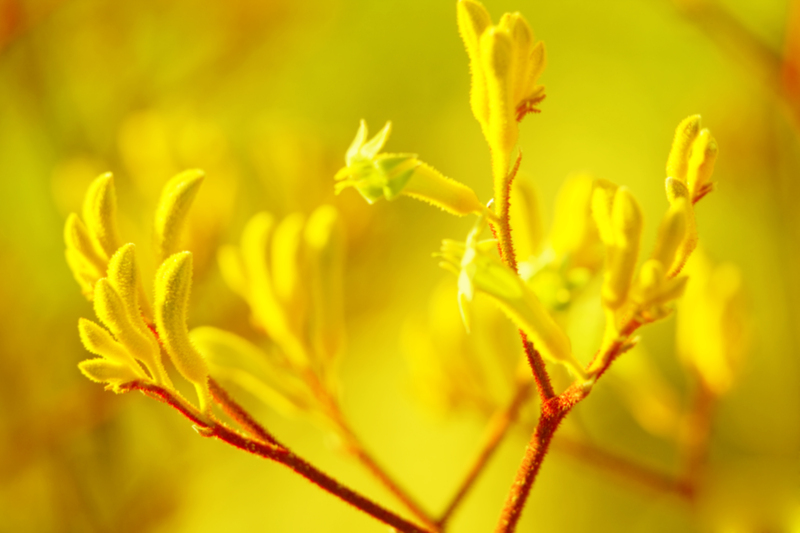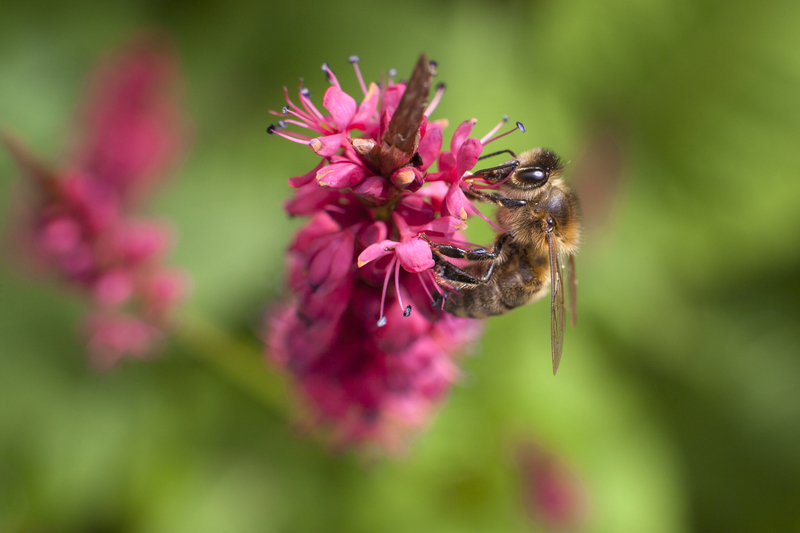Balancing Green Thumbs and Wagging Tails: Gardening Tips
Posted on 20/08/2025
Balancing Green Thumbs and Wagging Tails: Gardening Tips for Pet Owners
Gardening and pets--two passions that breathe life into our homes and yards! But sometimes, these interests can clash. Many pet owners find themselves facing unique challenges when trying to nurture vibrant gardens while also ensuring their beloved dogs or cats stay safe and happy. Fortunately, there are smart strategies to help you create a safe, beautiful, and pet-friendly garden, allowing you to enjoy the best of both worlds. In this comprehensive guide, we explore practical, SEO-optimized gardening tips designed especially for people who love both their green thumbs and their wagging tails.
Why Balance Pet-Safe Gardening with Landscaping?
Combining pet ownership with gardening can be incredibly rewarding but also presents unique obstacles. Curious pets can dig up flower beds, chew on dangerous plants, or even become ill from exposure to pesticides. Meanwhile, your carefully cultivated plants may suffer under paws, teeth, and claws. Striking the right balance ensures your garden flourishes while your furry companions remain healthy and content.
Benefits of Pet-Friendly Gardens
- Healthier pets: Reducing toxic plant exposure and harmful chemicals keeps your animals safe.
- Peace of mind: Relax knowing your pets can roam safely among your greenspace.
- Long-lasting gardens: Smart planning reduces accidental pet damage, making your garden more resilient.
- Ecological harmony: Sustainable gardening practices benefit both flora, fauna, and your pets.

Choosing the Right Plants: Pet-Safe Choices for Every Yard
One of the most crucial steps in balancing a pet-friendly garden is selecting non-toxic plants. While some common garden favorites are safe, others can pose serious risks. Here's how to choose wisely.
Plants to Avoid
- Lilies: Extremely toxic to cats, even in small amounts.
- Oleander: Dangerous for both dogs and cats; ingestion can be fatal.
- Sago Palm: All parts, especially seeds, are highly poisonous.
- Azalea/Rhododendron: Ingestion causes vomiting, drooling, and more severe symptoms.
- Foxglove: Contains digitalis, which may cause heart problems for pets.
- English Ivy: Leaves and berries can cause gastrointestinal issues.
- Chrysanthemums: May cause vomiting and skin irritation.
Pet-Friendly Plant Varieties
- Marigolds (Tagetes): Non-toxic and can even repel insects.
- Sunflowers: Safe for most pets and create a sunny, vibrant garden feel.
- Rosemary: Safe and aromatic--perfect for herb gardens.
- Snapdragons: Beautiful blooms that are non-toxic for pets.
- Spider Plants: Safe for indoor and outdoor spaces; cats may chew on them but they're not harmful.
- Boston Ferns: A lush, pet-safe option for shady spots.
- Basil, Thyme, and Parsley: Most culinary herbs are safe for dogs and cats when used in moderation.
Designing a Garden Layout That's Both Beautiful and Pet-Proof
Smart garden design is key to balancing gardening with pet ownership. Thoughtful planning can prevent accidental destruction and ensure safe, accessible play zones for your furry friends.
Create Designated Play Areas
- Dog runs: Install paths or "racetracks" along fences where dogs like to patrol. Use tough grass or mulch that can withstand frequent traffic.
- Sandbox for digging: Channel your dog's digging instincts by providing a specific area filled with soft sand or soil.
- Cat-friendly nooks: Cats love sheltered spaces and shady retreats--use cat-safe shrubs or small trees for hideaways.
Install Pet Barriers and Borders
- Raised beds: Elevated planters can keep delicate flowers out of paw's reach.
- Sturdy edging: Use rocks, bricks, or sturdy fencing around fragile plants.
- Low fencing: Small fences (12-18 inches) can deter most dogs without being obtrusive.
- Netting: For determined diggers or climbers, consider temporary plastic netting around new plantings.
Design Paths and Hardscaping with Pet Traffic in Mind
- Mulch smartly: Use pet-safe mulch like pine or cedar; avoid cocoa mulch, which is toxic to dogs.
- Stone and pavers: Durable, easy-to-clean surfaces stand up to muddy paws and digging claws.
- Gravel: Can be used in high-traffic areas, but make sure stones aren't small enough for pets to swallow.
Safe Use of Fertilizers and Pest Management
Many fertilizers, herbicides, and pesticides present unintentional dangers in a garden shared with pets. Adopt eco-friendly and pet-safe methods to protect your green thumb while keeping your furry friends healthy.
Understanding Dangerous Chemicals
- Chemical fertilizers: Ingestion can cause gastrointestinal upset or worse.
- Slug and snail baits: Often contain metaldehyde, highly toxic to cats and dogs.
- Weed killers: Pets may absorb these toxins through their paws--or by licking the grass.
- Pesticide sprays: Wind can carry these onto food gardens and pet areas.
Pet-Safe Fertilizer Alternatives
- Compost: Homemade compost enriches the soil and is free from harmful chemicals.
- Coffee grounds and eggshells: These kitchen scraps deter pests and nourish plants.
- Fish emulsion: An organic choice, but keep pets from drinking it due to the smell.
- Natural mulch: Pine needles or untreated wood chips add nutrients and keep weeds down without chemicals.
Eco-Friendly Pest Control
- Hand-picking: The simplest solution for larger pests like caterpillars or beetles.
- Diatomaceous earth: Non-toxic to pets but effective against soft-bodied bugs.
- Beneficial insects: Encourage ladybugs, lacewings, and spiders to control harmful pests.
- Neem oil: Used in moderation, it's less harmful to pets than most commercial insecticides.
Training Tips: Teaching Pets Garden Etiquette
Even the best-designed garden benefits from a little pet discipline. Garden-friendly training helps cats and dogs understand boundaries and keeps both plants and animals safe.
Training Dogs
- Positive reinforcement: Reward your dog for using designated play or potty areas.
- Redirection: If your dog starts digging where they shouldn't, lead them to their sandbox and praise them there.
- Supervised exploration: Keep an eye on your pet during early garden visits to catch and correct bad habits quickly.
- Consistent boundaries: Use words and gestures to reinforce "off-limit" zones.
Guiding Cats
- Scratching posts: Place these near the garden so cats scratch them instead of delicate plants.
- Deterrent scents: Citrus peels or coffee grounds often deter cats from digging in unwanted spots.
- Garden "catio": Install a secure outdoor enclosure to allow safe supervised access.
The Right Hardscape Features for Pet-Safe Gardens
Hardscaping--such as patios, paths, decks, and water features--adds beauty to your yard and can make your space safer and more enjoyable for pets. Thoughtful choices can also save time on cleaning and maintenance.
Pet-Friendly Pathways
- Solid stone or brick: Cool in summer, less likely to harbor fleas/ticks.
- Wood decking: Avoid treated lumber containing arsenic or copper compounds; opt for pet-safe finishes.
- Artificial turf: Modern turf is durable, easy to clean, and eliminates mud.
Fencing for Safety and Freedom
- Secure fencing: Ensure your fence is tall enough and escape-proof, especially for energetic breeds or cats that love to climb.
- Gates with locks: Use childproof latches to prevent pets from opening them.
- Pet doors: Consider installing small pet doors for controlled access between the house and the garden.
DIY Enrichment: Making a Pet Paradise in Your Garden
With creativity, you can turn your garden into a wonderland for curious pets--without compromising your plants. Enrichment features stimulate your animals and give them a sense of ownership over their outdoor space.
Fun Features for Dogs
- Agility equipment: Low jumps, tunnels, and weave poles offer hours of entertainment and exercise.
- Shaded rest zones: Plant fast-growing shrubs or install pet tents for cool retreats on hot days.
- Pet-friendly water features: A shallow splash pool or fountain lets dogs cool off safely.
Garden Attractions for Cats
- Climbing structures: Sturdy logs, low cat trees, and well-secured shelves encourage safe climbing.
- Hideaway pots: Large terracotta pots turned on their sides make cozy snoozing spots.
- Cat grass planters: Oat or wheat grass satisfies your cat's grazing instincts without damaging other plants.
Ongoing Maintenance for Healthy Gardens and Happy Pets
Maintaining a thriving, pet-friendly garden takes ongoing attention. Regular inspections help prevent plant damage, pet boredom, and unintended exposure to hazards. Here's how to keep things running smoothly:
- Monitor growth: Quickly remove any new weeds or volunteer plants that could be toxic to pets.
- Check barriers: Periodically inspect fences and nets for gaps or signs of wear.
- Clean up regularly: Remove pet waste promptly to avoid garden health problems (especially in vegetable beds).
- Seasonal care: Adjust your plant selections and hardscape for different seasons (watch out for icy pathways, for instance).

Conclusion: Harmony between Gardening and Pet Companions
With foresight, creativity, and a little education, balancing green thumbs with wagging tails is entirely possible--and extremely rewarding. By choosing pet-safe plants, designing smart garden layouts, using eco-friendly fertilizers, training pets, and enriching the garden with fun features, you'll create an outdoor space where all household members can thrive.
Nurture your love for gardening and your devotion to your pets by following these tried-and-true tips for a landscape that's safe, beautiful, and truly welcoming. After all, a garden's joy is even greater when it's shared with furry friends!
Frequently Asked Questions (FAQs) - Balancing Gardening and Pet Care
- Q1: Which common plants should I avoid to keep my garden safe for pets?
A: Some of the most common toxic plants for pets include lilies, oleander, sago palm, azaleas, and foxglove. Always double-check before introducing new plants. - Q2: How can I discourage my dog from digging in my flower beds?
A: Provide a designated digging zone like a sandbox, reward your dog for good behavior, and use physical barriers to protect sensitive beds. - Q3: Are there any safe ways to deter pests without harming pets?
A: Use diatomaceous earth, encourage beneficial insects, and apply natural deterrents like neem oil or coffee grounds. - Q4: What mulch is safest for gardens shared with pets?
A: Pine and cedar mulches are safe options; avoid cocoa mulch, which is toxic to dogs. - Q5: How often should I inspect my pet-friendly garden for hazards?
A: Check your garden every one to two weeks for hazards, unwanted plants, or fence weaknesses, and do a deeper seasonal review each quarter.
Ready to cultivate a serene, safe, and spectacular garden for both you and your pets? Start today with these expert gardening tips and watch your landscape--and pet's happiness--bloom!

